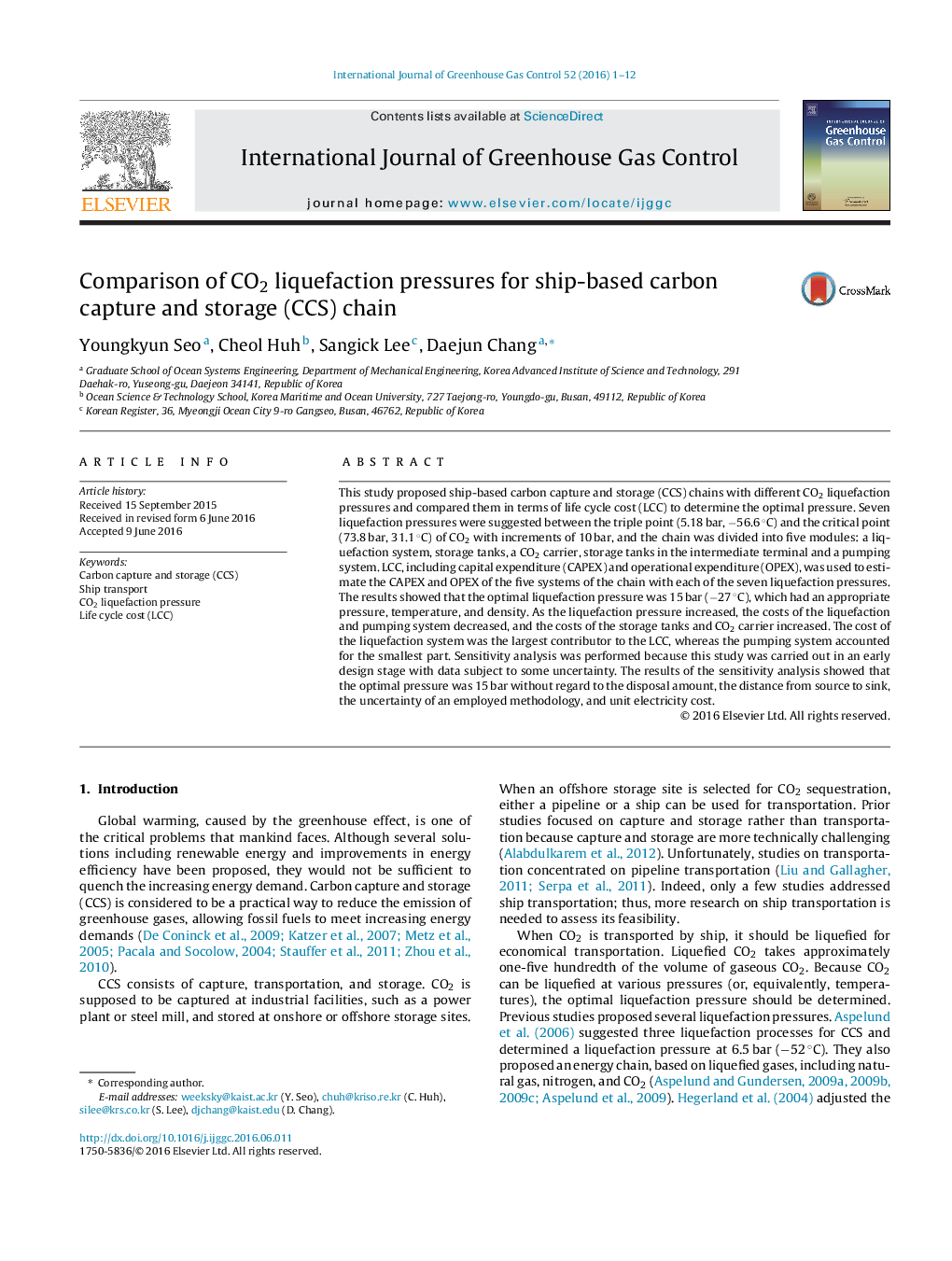| کد مقاله | کد نشریه | سال انتشار | مقاله انگلیسی | نسخه تمام متن |
|---|---|---|---|---|
| 8090000 | 1521968 | 2016 | 12 صفحه PDF | دانلود رایگان |
عنوان انگلیسی مقاله ISI
Comparison of CO2 liquefaction pressures for ship-based carbon capture and storage (CCS) chain
دانلود مقاله + سفارش ترجمه
دانلود مقاله ISI انگلیسی
رایگان برای ایرانیان
کلمات کلیدی
موضوعات مرتبط
مهندسی و علوم پایه
علوم زمین و سیارات
فرآیندهای سطح زمین
پیش نمایش صفحه اول مقاله

چکیده انگلیسی
This study proposed ship-based carbon capture and storage (CCS) chains with different CO2 liquefaction pressures and compared them in terms of life cycle cost (LCC) to determine the optimal pressure. Seven liquefaction pressures were suggested between the triple point (5.18 bar, â56.6 °C) and the critical point (73.8 bar, 31.1 °C) of CO2 with increments of 10 bar, and the chain was divided into five modules: a liquefaction system, storage tanks, a CO2 carrier, storage tanks in the intermediate terminal and a pumping system. LCC, including capital expenditure (CAPEX) and operational expenditure (OPEX), was used to estimate the CAPEX and OPEX of the five systems of the chain with each of the seven liquefaction pressures. The results showed that the optimal liquefaction pressure was 15 bar (â27 °C), which had an appropriate pressure, temperature, and density. As the liquefaction pressure increased, the costs of the liquefaction and pumping system decreased, and the costs of the storage tanks and CO2 carrier increased. The cost of the liquefaction system was the largest contributor to the LCC, whereas the pumping system accounted for the smallest part. Sensitivity analysis was performed because this study was carried out in an early design stage with data subject to some uncertainty. The results of the sensitivity analysis showed that the optimal pressure was 15 bar without regard to the disposal amount, the distance from source to sink, the uncertainty of an employed methodology, and unit electricity cost.
ناشر
Database: Elsevier - ScienceDirect (ساینس دایرکت)
Journal: International Journal of Greenhouse Gas Control - Volume 52, September 2016, Pages 1-12
Journal: International Journal of Greenhouse Gas Control - Volume 52, September 2016, Pages 1-12
نویسندگان
Youngkyun Seo, Cheol Huh, Sangick Lee, Daejun Chang,